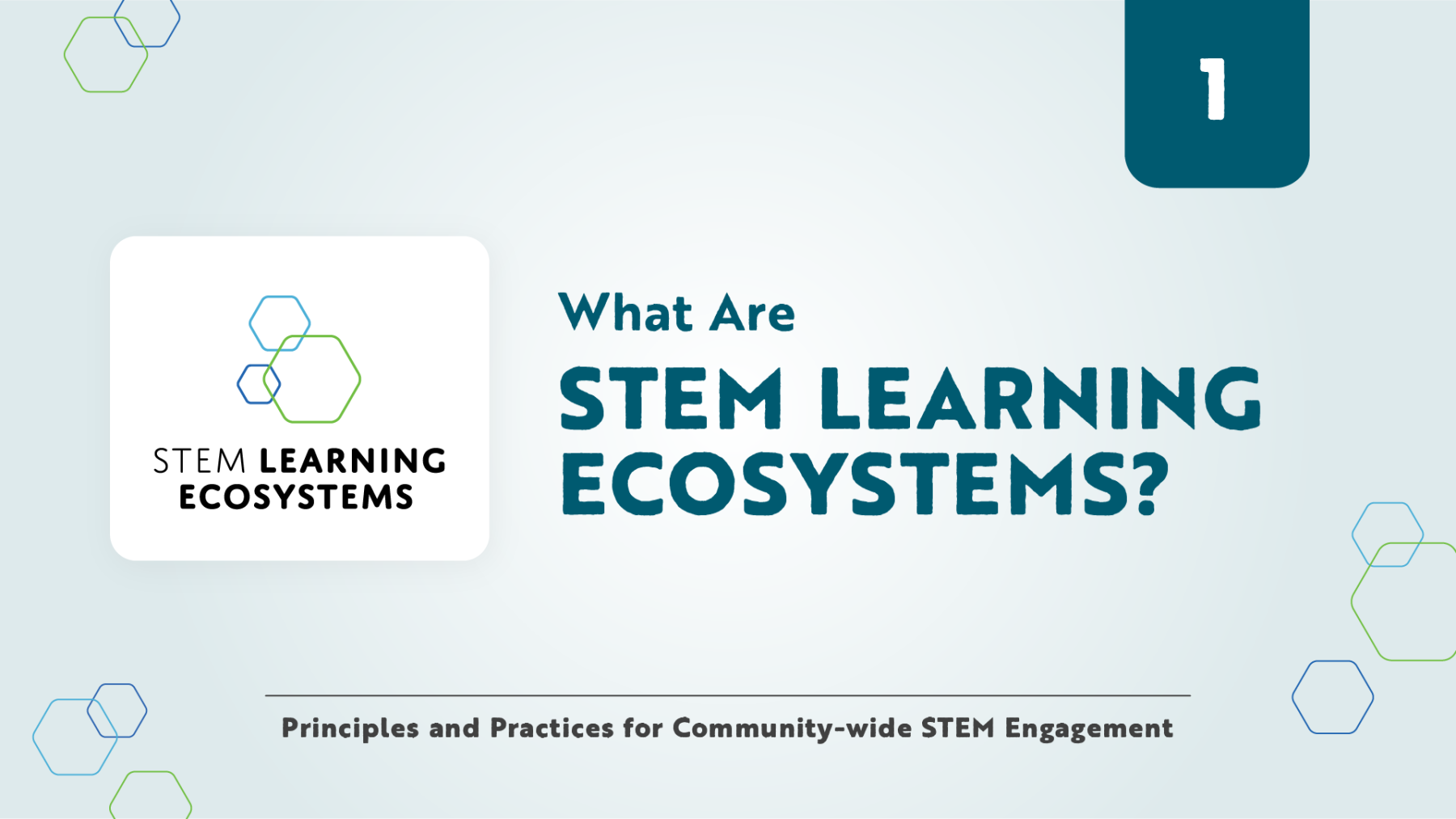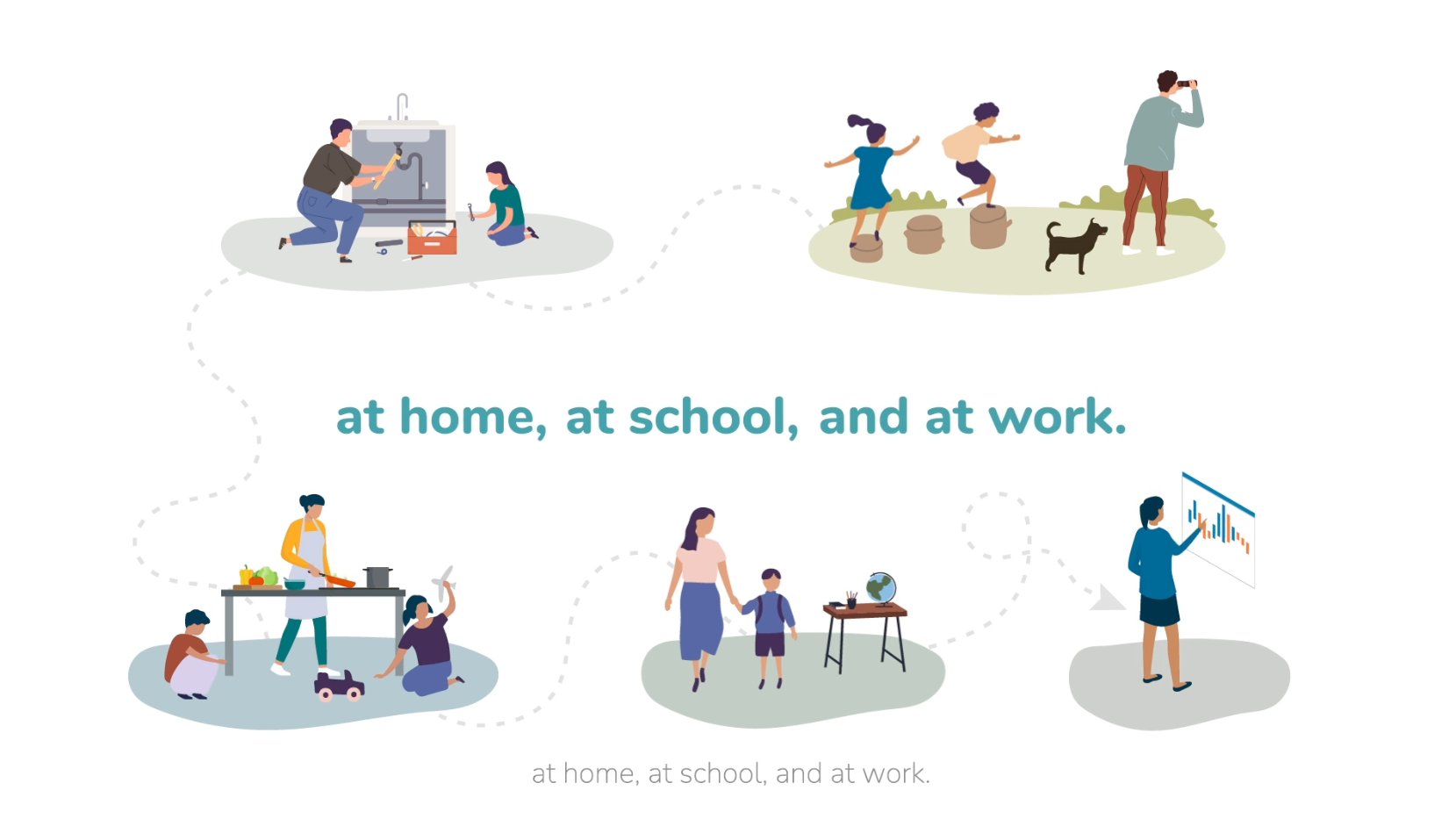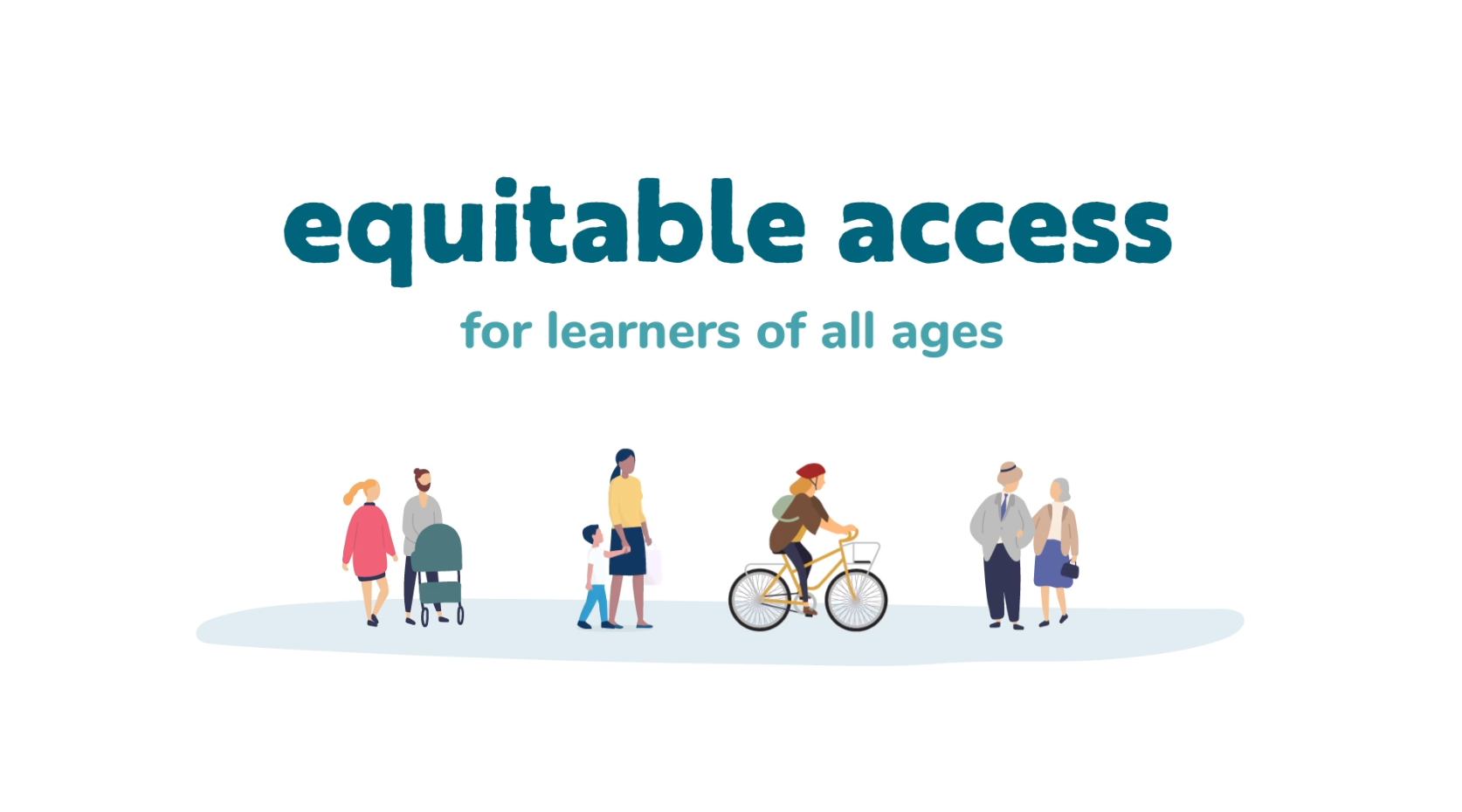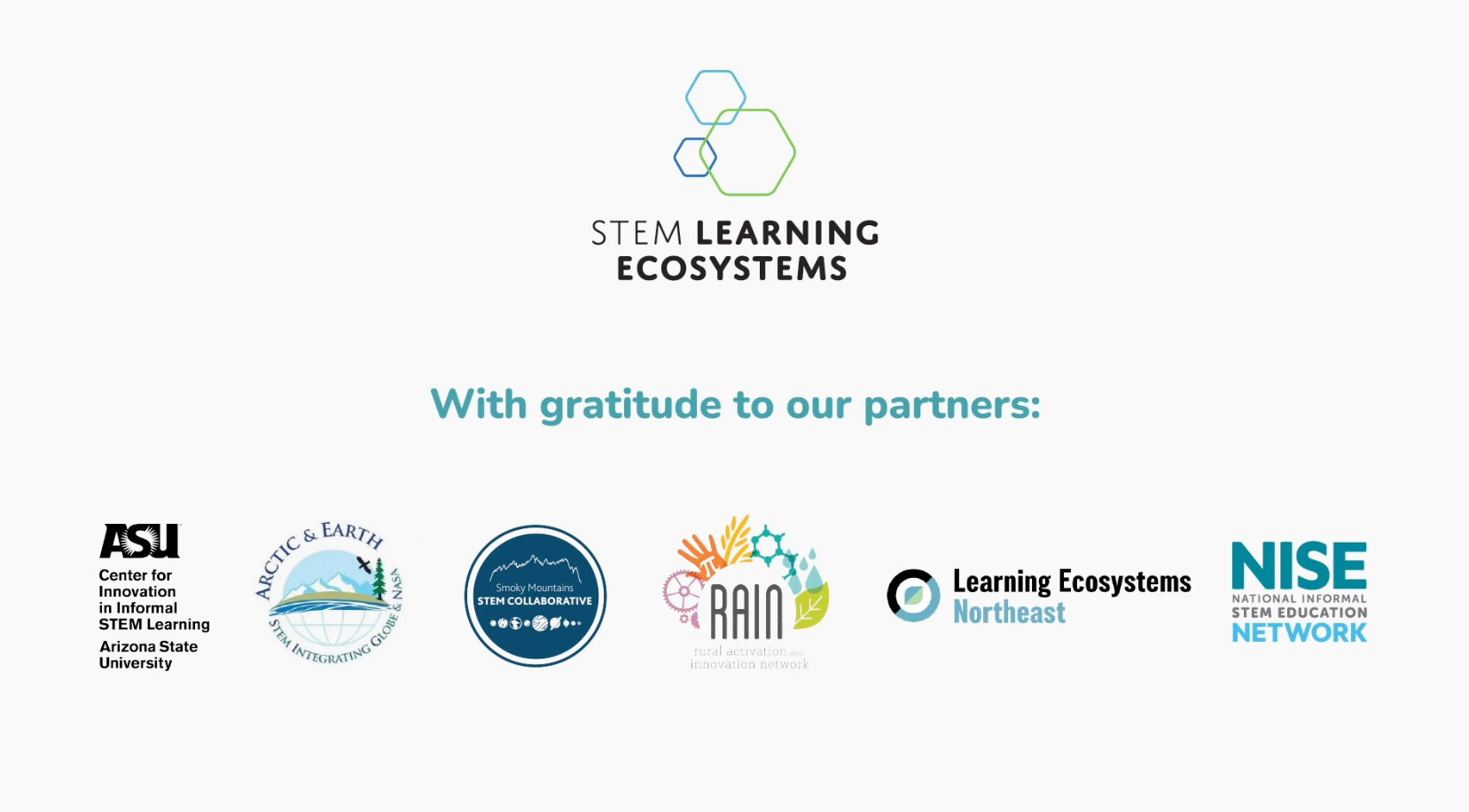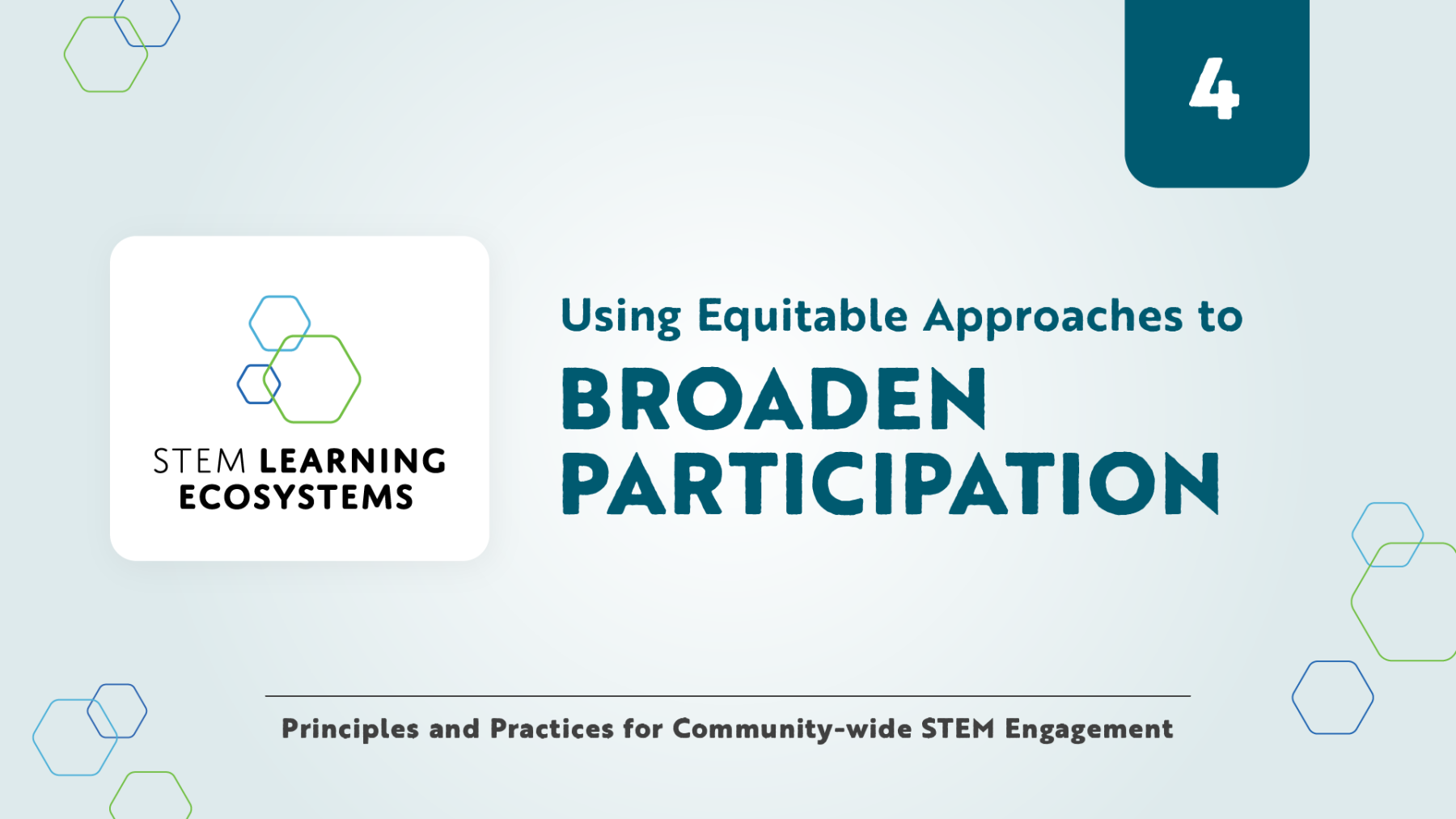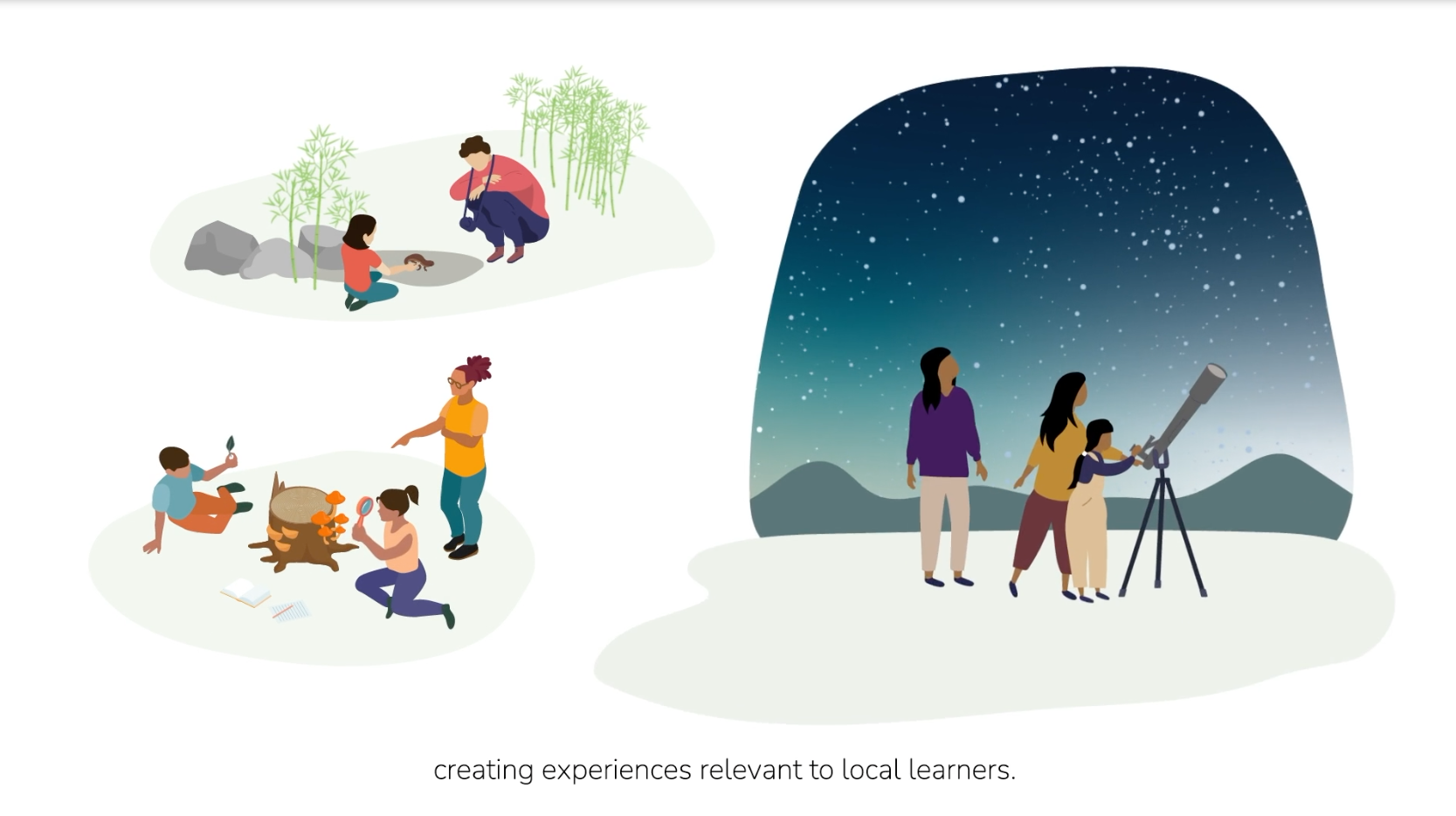DESCRIPTION
This series of professional learning videos is designed to introduce educators to STEM Learning Ecosystems. Key aspects of place-based STEM Learning ecosystems include developing partnerships among local institutions, providing pathways for learners, and creating relevant experiences for local learners responding to cultural, societal, and geographic contexts.
1. What Are STEM Learning Ecosystems?
(1 minute, 45 seconds)2. Introduction to STEM Learning Ecosystems?
(6 minutes, 9 seconds)3. Building and Supporting Strong Partnerships
(7 minutes, 3 seconds)4. Using Equitable Approaches to Broaden Participation
(6 minutes, 11 seconds)5. Creating Authentic STEM Learning Experiences
(6 minutes, 41 seconds)
Companion Reflection and Discussion Guide
Discussion prompts designed to accompany the STEM learning ecosystem video series and promote conversation and reflection between small teams or groups of professionals.
DESCRIPTION
This series of professional learning videos is designed to introduce educators to STEM Learning Ecosystems. Key aspects of place-based STEM Learning ecosystems include developing partnerships among local institutions, providing pathways for learners, and creating relevant experiences for local learners responding to cultural, societal, and geographic contexts.
1. What Are STEM Learning Ecosystems?
(1 minute, 45 seconds)2. Introduction to STEM Learning Ecosystems?
(6 minutes, 9 seconds)3. Building and Supporting Strong Partnerships
(7 minutes, 3 seconds)4. Using Equitable Approaches to Broaden Participation
(6 minutes, 11 seconds)5. Creating Authentic STEM Learning Experiences
(6 minutes, 41 seconds)
Companion Reflection and Discussion Guide
Discussion prompts designed to accompany the STEM learning ecosystem video series and promote conversation and reflection between small teams or groups of professionals.
TRAINING VIDEOS
Credits
Arizona State University
Please note this video series uses a different Creative Commons license that does not allow for derivatives:
CC BY-NC-ND 4.0
Attribution-NonCommercial-NoDerivs 4.0 International
https://creativecommons.org/licenses/by-nc-nd/4.0/deed.en
This material is based upon work supported by NASA under cooperative agreement award number 80NSSC21M0007. Any opinions, findings, and conclusions or recommendations expressed in this material are those of the author(s) and do not necessarily reflect the view of the National Aeronautics and Space Administration (NASA).
Creative Commons Attribution Non-Commercial Share Alike 3.0 United States (CC BY-NC-SA 3.0 US).
View more details

NISE Network products are developed through an iterative collaborative process that includes scientific review, peer review, and visitor evaluation in accordance with an inclusive audiences approach. Products are designed to be easily edited and adapted for different audiences under a Creative Commons Attribution Non-Commercial Share Alike license. To learn more, visit our Development Process page.

